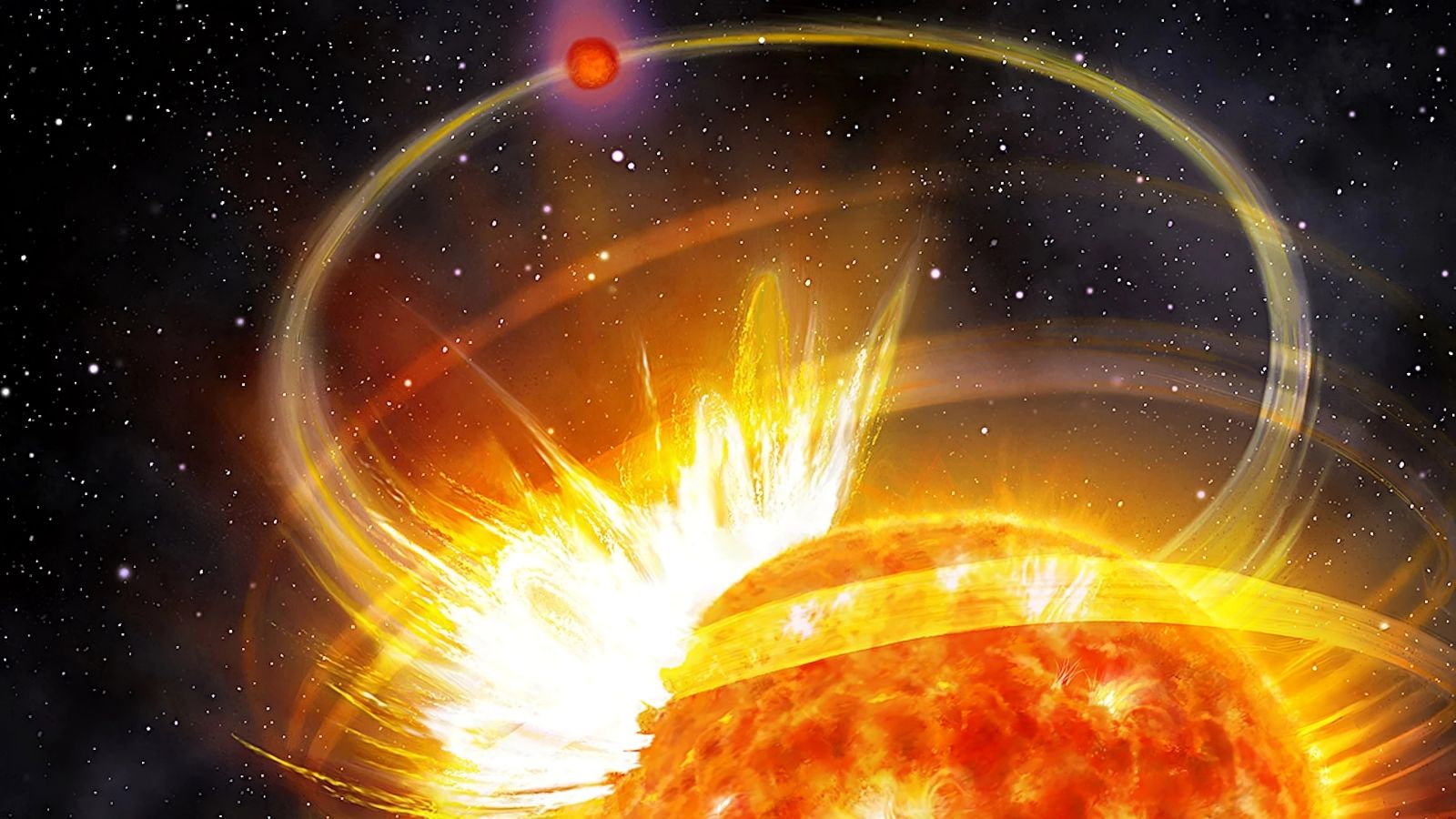Follow us on Google News (click on ☆)

An artistic illustration of the star HIP 67522 ejecting a burst of plasma toward the planet.
Credit: Danielle Futselaar
The planet completes its orbit in just seven days, an interval so short that it alters the star's own magnetic field. Researchers observed that this interaction triggers massive flares on the stellar surface, which gradually erode the planet's atmosphere.
This discovery, published in Nature, sheds light on a little-studied type of interaction between stars and planets. Thanks to combined observations from the TESS (NASA) and Cheops (ESA) satellites, scientists noted that solar flares coincided with the planet's transit in front of its star, suggesting a direct link between the two.
At this rate, HIP 67522 b could lose a significant portion of its mass, eventually shrinking to the size of a planet like Neptune. The Plato telescope, currently in preparation by ESA, should allow for further observations and a deeper understanding of these extreme interactions.
How can a planet influence its star's magnetic activity?
Planets in very close orbits can disrupt their star's magnetic field by altering the circulation of plasma on its surface. Acting as energy conductors, they create tensions in the magnetic field lines that can release as flares.
These interactions show that planets don't just endure their star's influence—they can also modify it. This opens a new perspective in the study of planetary systems, particularly those featuring giant planets very close to their stars.
What is a stellar flare and why is it dangerous for planets?
A stellar flare is a sudden release of magnetic energy, accompanied by high-energy particles and ultraviolet or X-ray radiation. When a planet is in close orbit, it is directly exposed to this energetic violence.
These flares can strip away the upper layers of the atmosphere, disrupt the chemistry of existing gases, and, over time, significantly reduce the planet's mass. In the case of HIP 67522 b, the effects are so extreme that they could radically alter its appearance and internal structure.
Understanding these mechanisms is important for better assessing the habitability of exoplanets and the conditions in which they can evolve. HIP 67522 b illustrates the extreme fragility of some worlds in the face of their star's forces.